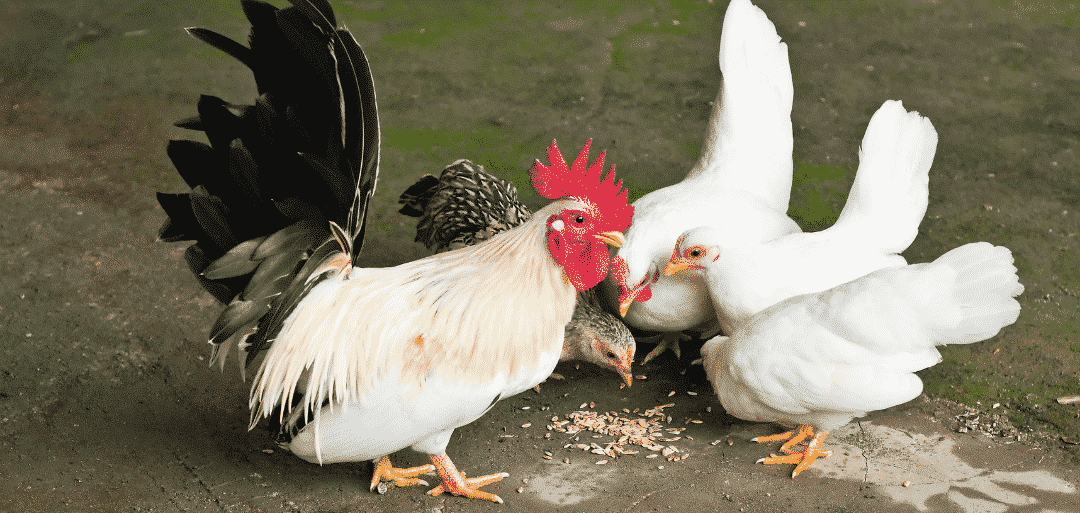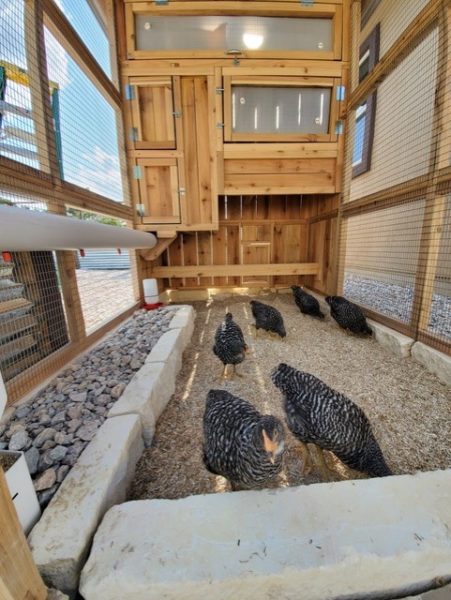
What are Bantam Chickens?
If you’re new to the world of backyard chicken keeping, then you are certain to come across bantam chickens eventually. Bantam chickens are simply smaller versions of regular-sized chicken breeds. Popular for their appearance, bantam chickens are one-half, and sometimes even one-third, the size of an average chicken! Bantam chickens weigh less than 3 pounds, whereas average-sized birds weigh between 5 -10 pounds.
Cute is simply an understatement for how these fun and small-sized birds appear. Before you get taken over by their adorable appearance, we recommend learning some of the following considerations when it comes to raising and keeping bantam chickens of your own.
Are Bantam Chickens Good Layers?
Probably one of the most important questions to consider when selecting chicken breeds is if they are good egg layers. As you can assume, a small chicken will produce…small eggs! To get an idea for future recipes, two bantam eggs equal one large egg. However, most importantly, you may be wondering if bantams will even lay often enough to meet your breakfast or baking needs! Depending on the breed you select, most bantams will lay just as often as their regular-sized equivalents.
Feeding
Meal servings reduce significantly for bantams compared to their regular-sized companions. You may view this as more money saved in the long-run, or perhaps an opportunity to add even more bantams. 😉 Bantams require no special diet and can enjoy the same nutritional feeds as your average-sized flock members. Regardless of what feed texture you select for your laying flock members, both crumbles and pellets will work great for your bantams.
Can Bantam Chickens live with Regular Chickens?
The short answer is yes! Although the obvious size difference may initially bring concern, it is still very possible to mix both your bantam favorites and average-sized members seamlessly. There are, however, some simple rules of thumb that will make the overall transition easier for all of your flock members.
How to Introduce Bantams
New Flock Owner:
If you are contemplating both bantams and average-sized birds to start your first flock, we recommend starting with a higher ratio of bantams to average-sized birds, at least a 3:1 ratio. If brooding both average-sized chicks and bantams, it’s very important to separate the two to prevent any injury as well. For more help on how to brood chicks, make sure to refer to our blog topic here!
Existing Flock Owner:
If your existing flock currently consists of average-sized birds, then it is important to not introduce your bantams until they are at least 16 weeks of age. In addition, it is important to never introduce only 1 bantam to your flock of average-sized birds. We recommend always introducing at least 3 or more bantam flock members at once to prevent any possible bullying.
Flock Distractions
- If you are still concerned about how your flock may accept their new member, we recommend adding fun distractions for your birds to enjoy when you transition bantams. Distractions may be as simple as a crisp veggie garland from your garden or chicken-friendly treats like these.
- Some flock members are generally much better sports when it comes to accepting new flock friends than others. A few breeds that we recommend if you are starting your mixed flock include hens of the following breeds: Buff Orpingtons, Rhode Island Reds, Barred Rocks, and Easter Eggers. Unlike other flock members such as leghorns, who are a bit more frantic, a friendlier breed will be less likely to pick on your bantam birds.
Feed & Water
- If you enjoy the convenience of our EZ-Fill Feeders and Waterer’s then you can rest assured that with a simple adjustment, your new bantams can still have the great convenience of our accessories. If you own average-sized hens, then you may take note that your hens slightly duck to eat from the feeder dispenser. For Bantams, the feeder dispenser is level with their neck already therefore no adjustment is required.

If you own our EZ-Fill Waterers, then we recommend placing a stepping stone underneath the poultry nipples to make it easier for your bantam birds to peck at the nipple watering system.
Housing and Spacing
Although bantams may be smaller, their coop shouldn’t have to be as well! Each of our coops is bantam friendly and can accommodate your bird’s needs with optional accessories. Of course, with an only-bantam flock, you can allot for additional birds in your coop as well. For help on ordering the right number of birds for your coop, make sure to refer to our Advanced Hen and Egg Chart here.
For our coops that don’t include ramps, you can rest assured that your bantam will have no issue jumping to and from bars. On average bantams can jump up to 4 feet, a height that far exceeds the space between the ground and the roost bars of our coops!
Our Favorite Bantam Breed Layers
Many of the following bantam breeds keep their excellent egg-laying reputations just like their average-sized counterparts. The mentioned breeds are not only excellent egg layers but are docile and excellent to befriend.
Easter Egger
- By far a favorite with flock owners everywhere! The Easter Eggers bantam equivalent will grace you with the same beautifully colored eggs you adore while keeping an excellent and kind demeanor. If you already love the unique “bearded” fluff of feathers that these chickens sport, you’ll believe it to be even cuter on a bantam too!
Sussex
- Similar in personality to Easter Eggers, bantam Sussex breeds are calm and friendly birds that enjoy bonding with their owners. Unlike a few breeds that momentarily reduce egg production during the winter months, Sussex hens will continue to lay during wintertime.
Plymouth Rocks
- Likely one of our absolute favorite breeds, Plymouth rocks are known for their gentle nature and beautiful checkered plumage. You truly cannot go wrong with this flock member! Plymouth rocks are also known as Barred Rocks and lay beautiful brown eggs.
How to Order Bantam Breeds
Of course, adding bantams isn’t a requirement for starting your very own backyard farm, however, adding them sure is fun! Bantam breeds may be easier to integrate into a family with children as well! If the above information has you eager to add or start a flock with bantams, then we’ll be happy to share some important tips for ordering your first bantam flock.
All Bantams can Only be Ordered Unsexed
- Due to their smaller frame, hatcheries are unable to safely identify the gender of bantam chicks. Although you may prefer all hens, roosters are certain to possibly make their way into your order. Of course, roosters are nothing to be concerned about if your backyard or neighborhood allows for them, but if they don’t then we recommend having a plan ahead of ordering to rehome your roosters.
Ordering Bantams is Best During Warmer Months
- If you begin your backyard farming journey in a cooler month, then we recommend ordering average-sized birds along with your bantams to ensure that the collective body heat inside the coop keeps your birds warm.
Minimum Orders
- Depending on the season in which you order, you may be required to order a minimum number of birds. This is to ensure that your birds travel warm and safe through the mail. It’s best to check with the hatchery of your choice prior to ordering to ensure what your minimum is.
For more help on how to order your first flock of bantam chicks, make sure to check out our resourceful step-by-step blog post, “Your Guide to Ordering Your First Backyard Flock”. We hope you find this guide helpful as you begin your backyard farming journey! Have a question regarding what was mentioned in our blog post? Reach out to us at any time, we’re real people and enjoy helping new and existing chicken and coop owners everywhere! support@roostandroot.com, phone: 877-741-2667.


